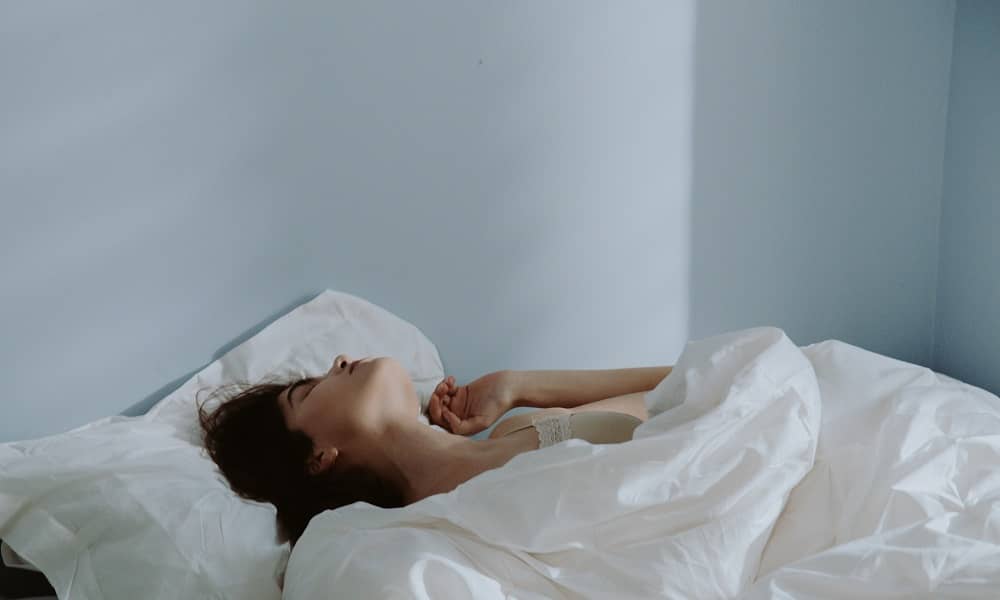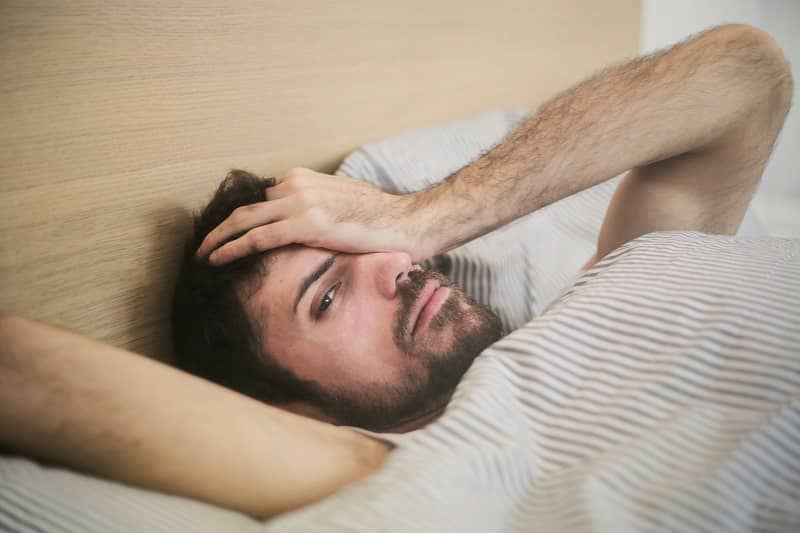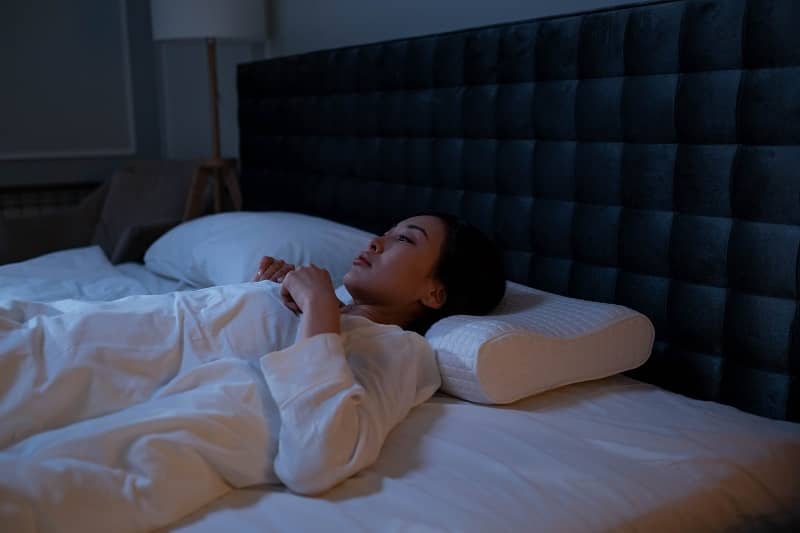


12 Mar Is Sleep Paralysis a Mental Disorder | What Happens During SP?
Is Sleep Paralysis A Disorder?
Many people have raised doubts over having horrific episodes of feeling paralyzed in their sleep. In this article, you will find what causes it.
Just imagine, you are awake, but neither can you move nor open your eyes. This is sleep paralysis. Surprisingly, it is a common issue affecting a large group of the population.
You get conscious during your sleep. Meanwhile, your body keeps snoozing due to the symptoms of anoxia. Sometimes, it is accompanied by different hallucinations. This elevates the feeling of fear.
As a matter of fact, sleep paralysis is a frightening condition. Various cultures and societies consider it a paranormal and ghostly thing. However, the development of psychology has debunked such beliefs.
At the same time, it has given rise to some doubts among skeptics. For instance, is sleep paralysis a disorder or a natural psychological phenomenon? Let’s dig into the available facts to find out.
Is Sleep Paralysis A Disorder – The Mental Health Facts
Before discussing if sleep paralysis is a mental disorder or not, you need to know what it actually is.
What Is Sleep Paralysis? – The Psychology
Sleep paralysis is an unwanted event occurring during your sleep.
Basically, it occurs due to disruptions in the sleep phases.
While you’re dozing off or even when you’re fast asleep, you tend to shift from one sleep phase to another. Sometimes, the transition doesn’t go smoothly. This makes your mind awake, while your body is asleep.
The symptom of anoxia worsens the situation. You know you can’t move. You hustle to stop the event. However, it gets worse.
Some even have hallucinations, which they define as paranormal experiences during the episode.
Now, let’s discuss its possibility of being a disorder.
Sleep paralysis is a common part of the Rapid Eye Movement (REM) cycle. When your body fails to translate from one sleep phase to another, you have an episode of SP. In general, SP occurs during the REM phase.
However, sometimes, you can even have an episode outside the REM sleep. Experts categorize this type of sleeping paralysis as a disorder. It can happen frequently in healthy people. Moreover, patients with narcolepsy, cataplexy and hypnagogic hallucinations can have episodes of SP.
Interestingly, you can also have SP without narcolepsy. Experts categorize the event as Isolated Sleep Paralysis (ISP).
These are some conditions under which the old hag syndrome aka sleep paralysis can be a disorder.
Apart from that, merely experiencing an episode isn’t a serious problem. But, under some circumstances, you need diagnosis and treatment.
So, is sleep paralysis dangerous?
Not at all! However, it can leave you tired. And you may suffer the consequences of bad quality sleep.
And as to when and how is sleep paralysis a disorder, you already have the answer. It’s time to understand what triggers make you oscillate between your sleep phases.
What Are The Causes Of Sleep Paralysis?


Sleep is the time when your body relaxes. Meanwhile, your voluntary muscles don’t make any movement. This helps avert situations where you may hurt your body due to acting out dreams.
Now, Sleep Paralysis (SP) is a result of disruption in the Rapid Eye Movement (REM) sleep cycle.
When you are asleep, your body tends to oscillate between REM (Rapid Eye Movement) and NREM (Non-Rapid-Eye Movement).
A single REM-NREM cycle goes for almost 90 minutes. When you are in the NREM phase, your body relaxes.
However, when you are in REM, your eyes move fast, while your body rests. It is when you have vivid dreams.
During an episode of SP, your body fails to transit from or to REM Sleep. Meanwhile, it isn’t in sync with your brain. This makes you conscious, while your body stays in a paralyzed mode.
Initially, it creates paranoia as you can’t understand what’s happening.
Sometimes, it also gives rise to paranormal auditory, visual, and even sensory experiences. This spikes the fear factor during an episode.
Scientists have explored every possibility and trigger. Fortunately, they were able to discover the top triggers behind sleep paralysis.
Here’s what is sleep paralysis caused by:
- narcolepsy,
- sleeping on your back,
- a family history of SP,
- the cataplexy and hypnagogic hallucinations,
- irregular sleeping patterns, and
- poor quality sleep.
Other triggering factors include migraines, clinical depression, hypertension, obstructive sleep apnea, and anxiety disorders.
One thing is clear, though.
Quality of sleep can determine how many episodes of sleep paralysis you can have.
If you maintain sleep hygiene and quality bed hours, you can fight it off. However, for the right treatment, it is also necessary to know what is the cause of sleep paralysis.
As a matter of fact, sleep paralysis is a brain disorder in certain cases, and they are already mentioned above. So, it’s time now to understand what an SP episode is like.
What Does Sleep Paralysis Feel Like?



The main symptom of SP is atonia. It is a condition where your body fails to make any movement.
Indeed, it occurs when you hit the bed or open your eyes. It even occurs during an episode of sleep paralysis. You know you are awake, BUT you can’t move your body.
Though it may sound rare, SP impacts a large population.
To find out how common is sleep paralysis?
You can follow this simple fact.
According to an estimation, almost all people have encountered an episode of SP once in their lifetime. Moreover, almost 75% of sleep paralysis episodes are accompanied by hallucinations that are different from typical dreams.
These mainly happen when you fall asleep (hypnagogic hallucinations) or are about to wake up (hypnopompic hallucinations). Depending on the symptoms, experts categorize them into three different categories.
The Three Types of Sleep Paralysis Hallucinations Include:
- Intruder hallucinations: People feel like a dangerous intruder is present in their room.
- Incubus hallucinations or Chest pressure hallucinations: You can feel suffocation along with pressure on your chest. It happens frequently along with intruder hallucinations.
- Vestibular-motor (V-M) hallucinations: This involves the feeling of a certain movement. Mainly, it is an out-of-body sensation. You can feel like you are flying. And still, you can’t move your body.
Either of the hallucinations increases your fear. This makes SP a more struggling event.
Certainly, Atonia is a disturbing symptom. However, hallucinations make the episode even more distressing.
Almost 90% of SP episodes are plagued with fear. Very few folks have a pleasant experience.
The experience varies according to culture and belief system as well.
How Long Does Sleep Paralysis Last?
There isn’t a suggestive time for an SP episode. Still, it can last for a few seconds to 20 minutes. On average, it remains for 6-7 minutes.
In general, sleep paralysis ends on its own.
Sometimes, an outside interruption can break the continuity of an episode. Either the touch or voice of someone can help you wake up. If someone shakes your body during a sleep paralysis event, you can overcome atonia easily.
After reading this segment, you may have a detailed understanding of sleep paralysis hallucinations.
Sleep paralysis typically occurs in people who are sleep-deprived. So, it goes without saying how important it is to have quality sleep at night.
What Happens During Sleep Paralysis?
Your sleep hours are divided into different phases. In fact, SP is a part of your REM sleep, i.e., rapid eye movement.
Let’s explain this clearly…
Your sleep hours are segregated in different phases. When you are asleep, your body keeps moving from one phase to another. The main impact of the cycle is to provide proper rest to your body.
However, sometimes due to poor quality sleep or external triggers, your sleep cycle is disrupted.
So, your body struggles to translate from one phase to another. This unsmooth transition makes your mind conscious. Meanwhile, your body stays in the rest mode.
Let’s understand how the brain is involved in sleep paralysis…
Your sleep cycles rely on REM and NREM. NREM is the Non-Rapid Eye Movement Phase. During this phase, your body takes full rest.
Later, it transits to the REM cycle. This is rapid eye movement. Clearly, your eyes move during this cycle. And this leads to vivid dreams.
However, sometimes your body fails to make a smooth transition. This can occur due to lots of sleep paralysis causes and factors. As mentioned, the most prominent cause is sleep deprivation. This makes your body want more rest.
While the sleep phase transition causes your mind to experience a hiccup, you get conscious. Meanwhile, your body continues with its rest period. Of course, it creates paranoia and fear.
Many people claim to have intense encounters. Scientists need more sleep paralysis research to explain this part of a sleep paralysis episode. It isn’t clear what causes such hallucinations.
Unfortunately, hustling during sleep paralysis can worsen your encounter.
In general, sleep paralysis nightmares last for a few seconds to a few minutes. The best thing you can do is try to calm down irrespective of the fear of breaking the episode.
On a more serious note…
In some cases, SP can occur outside REM. This is induced by conditions like narcolepsy, cataplexy, and hypnagogic hallucinations.
In general, you can experience sleep paralysis due to several factors. This includes excessive stress, anxiety, excess alcohol consumption, sleep deprivation, and narcolepsy.
Treatment of sleep paralysis depends on detailed knowledge about SP and atonia. In recurring episodes, your specialists may investigate the chances of having narcolepsy. After all, it is usually the main cause in SP patients.
The above discussion has already explained under what circumstances sleep paralysis is a disorder. Whatever is the scenario, you can still fight it off.
For that, you need to know how to stop sleep paralysis in the moment.
How To Wake Up From Sleep Paralysis? [10 Ways]



A sleep paralysis episode is terrifying. The fear element makes sleep paralysis more frightening.
People define experiences like “trying to wake up but can’t open eyes.” In reality, this kind of encounter is really scary, and anyone who has had it knows this.
However, knowing how to wake up from sleep paralysis can help. Try the ways right below whenever possible to break an episode of sleep paralysis.
Here’s how to wake up from sleep paralysis?
- Try affirmations
- Submit to the process
- Try moving your toes, fingers, and pinky toe
- Clench and unclench your fist
- Think of a loved one or of a powerful memory with them
- Breath in, breathe out
- Try coughing
- Ask sleeping partner for help
- Move pinky toes
- Plan your waking strategy in advance
Here’s what you need to do in detail…
#1. Go with the Flow
Most people find it tough during SP episodes. This is because your mind has prior experience of fear.
It can further increase your anxiety about what’s to come. However, using affirmations can help. Try the following:
- This is SP and I am okay.
- It will be over soon.
- I will wake up. Everything will be normal.
Try repeating these sentences to reduce the fear during your episode.
#2. Don’t Hustle! Submit
What makes SP more terrifying is your inability to wake up.
This makes you worried and you try even more and harder to fight the hallucinations or the feeling of being pushed into the bed.
This does no good but may extend the duration of an episode. Instead, letting it be can help. It’s hard but try to control your fear, especially if you’ve experienced it before.
And if you still really want to wake up, just try the following.
#3. Move Your Toe
Moving your toes can help. Sleep paralysis accompanies the symptom of atonia. This makes your muscle group inactive.
However, focusing on small movements like moving your finger or toes can work. It even helps break the episode.
#4. Fist Up
It is another variation of moving your toes. Instead of toes, you should use fingers this time.
Try to bring them close in the form of a fist. Try clenching and unclenching your fist. This can break your episode.
#5. Think About Someone You Love
Sounds irrelevant, but it works.
Sleep paralysis hallucination can frighten you dreadfully. But you can control your fear.
Instead of focusing on the hallucination, think about someone you love and the memories/experiences you have with them. Various patients have found it effective. Even you can try it out.
#6. Breath
Sleep paralysis nightmare can make you breathless. The episode can lead to highs and lows in your breathing.
Thus, it is crucial to maintain a steady and controlled breath. It helps fight the fear factor associated with sleep paralysis.
#7. Cough for Help
Yes, you are right. You don’t need to call for help. Instead, you need to cough for help.
It is an autonomic or consciously maintained body function. Like wiggling your toes, you can try to cough to wake up. This will help you wake up from a sleep paralysis cycle quickly.
#8. Ask Your Sleep Partner
As mentioned, a voice and touch can break the episode.
If you have a sleep partner, you can ask them to help you out. In general, SP attacks may make you breathe heavily. Sometimes, there may be irregularity in the sleep pattern.
Ask them to shake you a little bit. This will break the episode. And you will be back in the real world.
#9. Wiggle Your Pinky
Wiggling your pinky toe can work. This is a variation of the fist and toes wiggling.
Moving this tiny body part is the easiest movement during atonia. This can help you break the episode.
Additional Tip: You can even try squeezing and un-squeezing your face. This is the easy way to break sleep paralysis immediately.
10. Plan It Out
The tips on how to wake up from sleep paralysis helped many to break SP episodes.
Also, it helped them get good sleep. But this would only work if you plan your strategy; meaning what tips you are to use and how.
Make note of what your previous experience was and how you broke the cycle. This will help you come out of the SP episode quickly. Basically, the next time you’ll know what works for you.
Also, it helps limit the fear taking over you during an SP attack.
** These tips don’t have scientific evidence. These are essentially based on experiences shared by patients about what worked for them. Studies and research papers are required to approve some of the claims.
Sleep paralysis is a terrifying experience. However, these tips help break the episode. You just need to use them smartly and effectively.
One More Tip: Once you wake up, get out of the sack quickly. Turn on the light if your room is dark. Clean your face with chilled water. Staying in bed and trying to sleep may invite another episode of sleep paralysis for some people. In many instances, one can frequently go from one episode to two and even three on a single day in a go.
So, sleep paralysis is a disorder only under certain circumstances when there’s a medical causative factor! At last, read a complete overview of this sleep condition.
ALSO READ: Poor Sleep Cycle Linked to the Risk of Dementia
Wrapping Up!
Sleep paralysis is the most common health condition among folks.
You don’t even need to question how common is sleep paralysis because it’s quite common, considering the poor-quality sleep many of us suffer from.
However, many have doubts about the possibility of sleep paralysis being a disorder. In some conditions, the SP episode is certainly a disorder.
But, usually, it happens due to an unsmooth transition between sleep cycles. This includes the sleep stages, REM and NREM. In general, it occurs during REM.
Sometimes, it occurs outside REM. In such a situation, it is a disorder requiring further investigation. You must consult a somnologist or psychologist if you’re having persistent sleep paralysis episodes.
Having said that, there are various sleep paralysis causes. While it mainly occurs due to inadequate sleep or poor-quality sleep, other factors can also contribute to the sleep problem.
Nonetheless, you can try out the above-mentioned tips to wake up from a sleep paralysis episode. Above all, plan your strategy to fight it effectively.
Do share your sleep paralysis experiences and what helped you get out of it down in the comments section.



No Comments